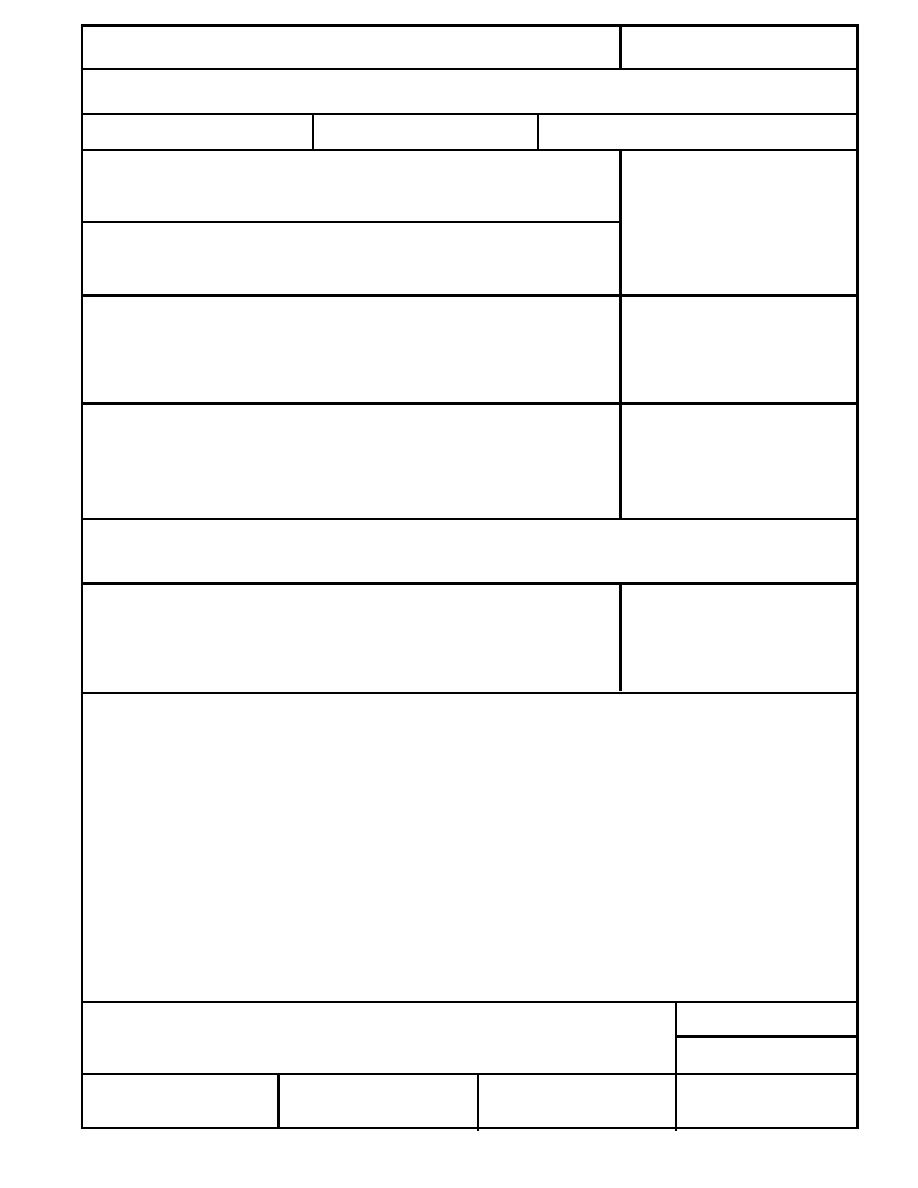
Form Approved
REPORT DOCUMENTATION PAGE
OMB No. 0704-0188
Public reporting burden for this collection of information is estimated to average 1 hour per response, including the time for reviewing instructions, searching existing data sources, gathering and
maintaining the data needed, and completing and reviewing the collection of information. Send comments regarding this burden estimate or any other aspect of this collection of information,
including suggestion for reducing this burden, to Washington Headquarters Services, Directorate for Information Operations and Reports, 1215 Jefferson Davis Highway, Suite 1204, Arlington,
VA 22202-4302, and to the Office of Management and Budget, Paperwork Reduction Project (0704-0188), Washington, DC 20503.
1. AGENCY USE ONLY (Leave blank)
2. REPORT DATE
3. REPORT TYPE AND DATES COVERED
May 1996
4. TITLE AND SUBTITLE
5. FUNDING NUMBERS
Development and Results of a Northern Sea Route Transit Model
Contract Number:
E86954003
6. AUTHORS
Nathan D. Mulherin, Duane T. Eppler, Tatiana O. Proshutinsky,
Andrey Yu. Proshutinsky, L. Dennis Farmer and Orson P. Smith
7. PERFORMING ORGANIZATION NAME(S) AND ADDRESS(ES)
8. PERFORMING ORGANIZATION
REPORT NUMBER
U.S. Army Cold Regions Research and Engineering Laboratory
72 Lyme Road
CRREL Report 96-5
Hanover, New Hampshire 03755-1290
9. SPONSORING/MONITORING AGENCY NAME(S) AND ADDRESS(ES)
10. SPONSORING/MONITORING
AGENCY REPORT NUMBER
U.S. Army Engineer District, Alaska
P.O. Box 898
Anchorage, Alaska 99506-0898
11. SUPPLEMENTARY NOTES
12a. DISTRIBUTION/AVAILABILITY STATEMENT
12b. DISTRIBUTION CODE
Approved for public release; distribution is unlimited.
Available from NTIS, Springfield, Virginia 22161
13. ABSTRACT (Maximum 200 words)
For a Corps of Engineers reconnaissance study, we developed a numerical model to estimate the time needed
for various ship types to transit the Russian Northern Sea Route. We simulated liquid bulk, dry bulk, and
container ship transits during the months of April, June, August, and October. In the model, probability
distributions for various ice, ocean and atmospheric inputs are exercised by a Monte Carlo algorithm to
generate combinations of conditions that affect ship speed. The speed, dependent on the established environ-
ment during each time and distance segment, is read from empirically derived lookup tables. Daily ship rates
and Russian passage fees were applied to calculate the relative total costs for moving the various cargoes over
the route. The model's development, limiting assumptions, simulation logic, data inputs, and resulting output
are discussed.
14. SUBJECT TERMS
15. NUMBER OF PAGES
116
Arctic shipping, Computer modeling, Cost analysis, Marine shipping, Monte Carlo
modeling, Navigation, Northeast Passage, Northern Sea Route, Sea ice, Shipping
16. PRICE CODE
cost
17. SECURITY CLASSIFICATION
18. SECURITY CLASSIFICATION
19. SECURITY CLASSIFICATION
20. LIMITATION OF ABSTRACT
OF REPORT
OF THIS PAGE
OF ABSTRACT
UNCLASSIFIED
UNCLASSIFIED
UNCLASSIFIED
UL
Standard Form 298 (Rev. 2-89)
NSN 7540-01-280-5500
Prescribed by ANSI Std. Z39-18
298-102



 Previous Page
Previous Page
